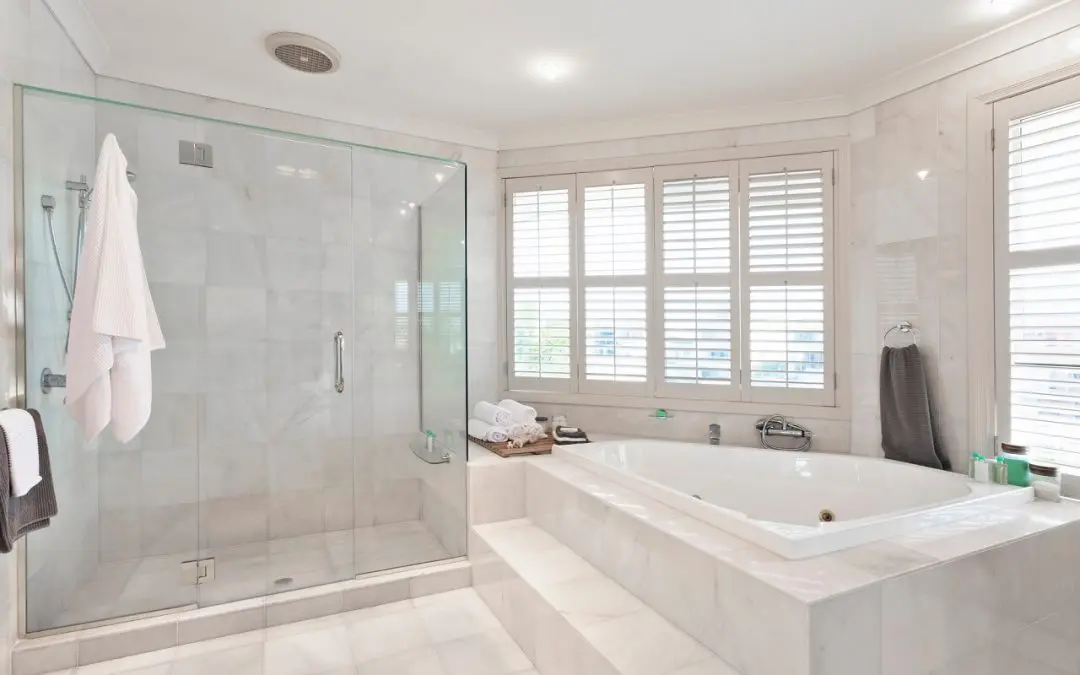Selecting the perfect flooring for your bathroom is crucial for aesthetics and functionality. With various materials available, each offering unique benefits, it’s essential to understand what works best for your space. This guide explores popular bathroom flooring materials to help you make an informed decision.
Ceramic and Porcelain Tile Bathroom Flooring Materials
Ceramic and porcelain tiles are among the most popular choices for bathroom flooring. These materials are known for their durability, low-maintenance cleaning, and versatility in design. Porcelain tiles, in particular, are denser and less porous than ceramic, making them more resistant to water and staining. Both options come in a wide range of colors, patterns, and finishes, allowing homeowners to create anything from a classic look to a contemporary design. One of the significant advantages of ceramic and porcelain tiles is their ability to mimic natural materials like stone or wood, offering high-end aesthetics at a more affordable price.
Vinyl Flooring
Vinyl flooring has come a long way in recent years, becoming a favorite for bathroom floors due to its affordability, water resistance, and ease of installation. Available in sheets, tiles, or planks, vinyl can replicate the look of more expensive materials, such as wood or stone, without the maintenance requirements. It is also softer underfoot compared to tile, making it more comfortable to walk on, especially in a bathroom where you might be barefoot frequently. Additionally, vinyl is a low-maintenance option, requiring only regular sweeping and occasional mopping to keep it looking its best.
Natural Stone
Natural stone flooring, such as marble, granite, or slate, adds a luxurious touch to any bathroom. Each stone type offers a unique look, with variations in color, veining, and texture that make your bathroom one-of-a-kind. While natural stone is more expensive and requires more maintenance than other materials, its durability and timeless appeal often make it worth the investment. However, it’s important to note that natural stone is porous, meaning it can absorb water and stains if not properly sealed. Regular sealing and careful maintenance are essential to keep stone floors looking beautiful for years.
Engineered Wood Bathroom Flooring Materials
For those who love the warmth and natural beauty of wood, engineered wood flooring is an excellent choice for the bathroom. Unlike solid hardwood, which is prone to warping in high-humidity environments, engineered wood is designed with a plywood base that offers greater stability. The top layer of natural wood gives it the same aesthetic appeal as solid hardwood, but with enhanced durability and moisture resistance. When choosing engineered wood for your bathroom, ensure it is well-sealed to protect it from moisture and spills.
Laminate Flooring
Laminate flooring is another budget-friendly option that can mimic the appearance of wood, stone, or tile. Composed of a photographic layer beneath a protective layer, laminate is highly resistant to scratches, stains, and fading. However, traditional laminate is less water-resistant than other flooring options, making it less suitable for moisture-prone bathrooms. Some modern laminates are specifically designed for wet areas, featuring improved water resistance, but it’s still advisable to avoid excessive water exposure to prolong the life of the flooring.
Cork Bathroom Flooring Materials
Cork flooring is an eco-friendly option that offers a unique blend of comfort, warmth, and sustainability. Made from the bark of cork oak trees, it is resistant to mold, mildew, and water, making it a good choice for bathrooms. Cork is soft underfoot and provides excellent insulation, both in terms of temperature and sound. However, like wood, it is porous and requires proper sealing to protect it from moisture. Regular resealing will ensure the flooring remains water-resistant and retains its appearance over time.
Choosing a flooring material for your bathroom involves balancing aesthetics, durability, and maintenance. Whether you prefer the classic look of ceramic tiles, the luxurious feel of natural stone, or the warmth of wood, there is a bathroom flooring option to suit your style and needs. Consider the specific demands of your bathroom environment, including moisture levels, foot traffic, and your personal design preferences, to select the best flooring to enhance your space.
FAQs
What should I consider when choosing bathroom flooring for a small bathroom?
Consider lighter-colored flooring materials for small bathrooms, as they can make the space feel larger and more open. Large-format tiles or planks can also create the illusion of a bigger room by reducing the number of grout lines or seams.
Can I mix different flooring materials in my bathroom?
Yes, mixing different flooring materials can create a unique and functional design. For example, you could use durable ceramic tiles in the main area of the bathroom and softer, warmer cork flooring in the dressing or vanity area. Ensure the transition between materials is smooth and that both options are well-suited to bathroom conditions.
Are there hypoallergenic bathroom flooring options?
Ceramic and porcelain tiles are considered hypoallergenic because they do not trap dust, pollen, or pet dander, which can aggravate allergies. Stone flooring is another good option, especially when sealed, as it is resistant to mold and mildew growth. These materials are easy to clean, further reducing allergens in your bathroom.
What are the most eco-friendly bathroom flooring options?
Cork and bamboo flooring are among the most eco-friendly choices for bathrooms. Cork is harvested from the bark of cork oak trees, which regenerates, making it a sustainable option. Bamboo, although technically a grass, grows rapidly and is highly renewable. Both materials are also naturally resistant to mold and mildew, making them suitable for bathroom environments.
Homesmith Home Inspections offers inspections to home buyers and sellers in the Houston, Texas area. Contact us to schedule our services.

